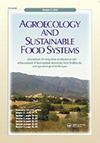Ecosystem-Based Agriculture Combining Production and Conservation—A Viable Way to Feed the World in the Long Term?
引用次数: 29
Abstract
This study analyzed examples of sustainable ecosystem-based agriculture where management methods supported livelihoods of smallholders while at the same time local ecosystem services were enhanced in Ethiopia, Brazil, and the Philippines. Participation by farmers and collective actions were found to be a crucial driving force, as local specific knowledge and “learning by doing” were main components of the development. Social cohesion, particularly through associations and cooperatives, and improved marketing opportunities were also important drivers. Furthermore, recognition by authorities at all levels was perceived as crucial. Effects of climate change, insecure property rights, and political instability were potential threats. The possibilities of such systems to be scaled up beyond self-sufficiency raised further questions.以生态系统为基础的农业——生产与保护相结合——长期养活世界的可行途径?
本研究分析了埃塞俄比亚、巴西和菲律宾以可持续生态系统为基础的农业实例,其中管理方法支持了小农的生计,同时增强了当地生态系统服务。农民的参与和集体行动被认为是一个关键的推动力,因为当地的具体知识和“边做边学”是发展的主要组成部分。社会凝聚力,特别是通过协会和合作社的社会凝聚力,以及营销机会的改善也是重要的推动因素。此外,各级当局的承认被认为是至关重要的。气候变化的影响、不安全的产权和政治不稳定是潜在的威胁。这种系统扩大到超出自给自足的程度的可能性提出了进一步的问题。
本文章由计算机程序翻译,如有差异,请以英文原文为准。
求助全文
约1分钟内获得全文
求助全文

 求助内容:
求助内容: 应助结果提醒方式:
应助结果提醒方式:


